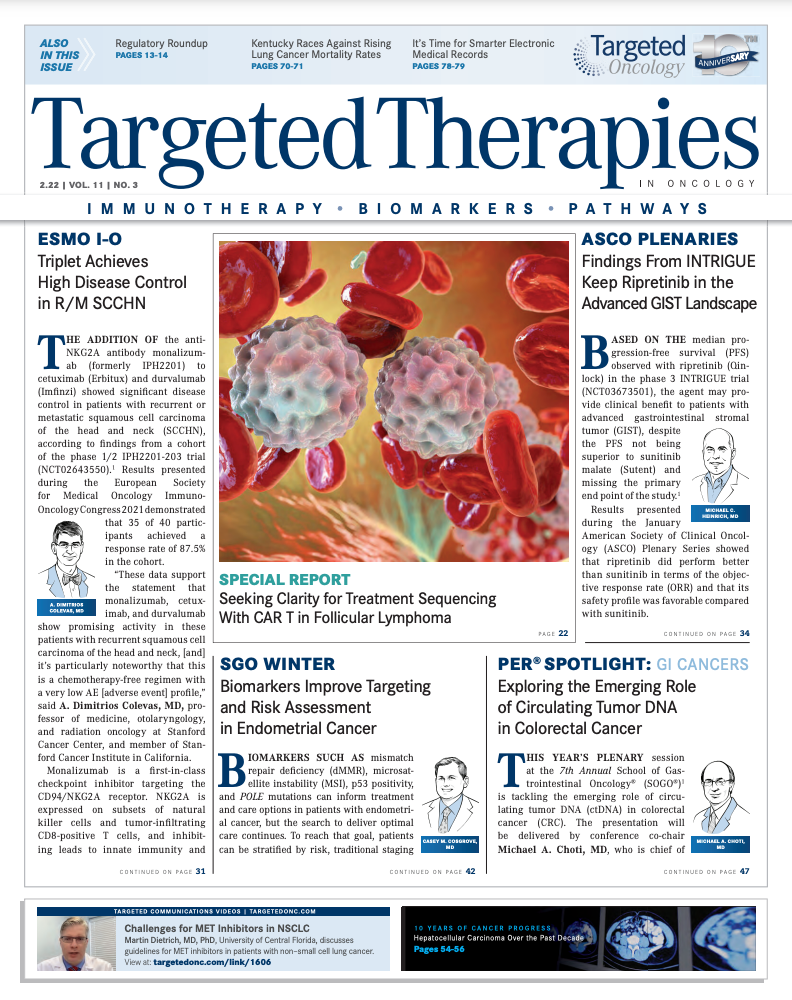Lukewarm Outcomes for Durvalumab in HNSCC Don’t Deter Triplet IO Combinations
According to Robert L. Ferris, MD, PhD, there is a steady pace of drug development for head and neck cancers despite modest findings with durvalumab triplet.
Robert L. Ferris, MD, PhD

We continue to observe the steady pace of drug development, which employs rational combinations based on preclinical science and biology paired with promising small developmental trials. Fortunately, innovative agents are still able to emerge, allowing for progress through further clinical evaluation even when early trial results are equivocal. From the European Society for Medical Oncology (ESMO) Immuno-Oncology (IO) Congress 2021, 1 particular trial deserves mention as an exemplar. In head and neck squamous cell carcinoma (HNSCC) there has been a drought of recent positive trial data. Although further IO combinations with doublet immune checkpoint inhibitor combinations continue to be tested, a different strategy targeting natural killer (NK) cells has shown promise.
Findings from the phase 1/2 clinical trial IPH2201-203 (NCT02643550) showed a confi rmed objective response rate (ORR) of 32.5% for all patients, regardless of PD-L1 status, and the unconfi rmed ORR was 50% [page 31]. This result compares favorably with the CheckMate 651 trial (NCT02741570) or pembrolizumab (Keytruda) plus chemotherapy in the KEYNOTE-048 trial (NCT02358031). The combined positive score of PD-L1 greater than 1 was 63% vs 80% in other trials, so this was not necessarily a cohort that was highly immune responsive. A combination of cetuximab (Erbitux) and monalizumab that blocks an inhibitory receptor in NKG2A on NK cells had previously shown activity in recurrent or metastatic HNSCC and in a separate cohort of patients who were PD-1 refractory. Given these exciting early data, the cetuximab and monalizumab combination appears to be enhanced with the addition of durvalumab (Imfi nzi). Indeed, durvalumab is not approved for HNSCC despite indications of its activity in first- and second-line trials that were negative overall. Durvalumab had “failed” in prior HNSCC phase 3 trials, though a glimmer of activity was observed. This example of developing new immunobiology translating to the clinic is innovative because it does not simply rely on a new T-cell targeted immunotherapy but rather on harnessed NK cells, long felt to be key antitumor immune effectors and helper cell.
Buttressed by the promising data from those trials of development of activity in HNSCC, AstraZeneca saw enough activity to remain enthusiastic about prospects for durvalumab, used here as a triplet IO regimen. This is a model for the fi eld to progress multiple antibody combinations and possibly re-introduce specifi c agents which had not succeeded alone in other trials but may leverage other target assets using rational biological combinations.

Survivorship Care Promotes Evidence-Based Approaches for Quality of Life and Beyond
March 21st 2025Frank J. Penedo, PhD, explains the challenges of survivorship care for patients with cancer and how he implements programs to support patients’ emotional, physical, and practical needs.
Read More